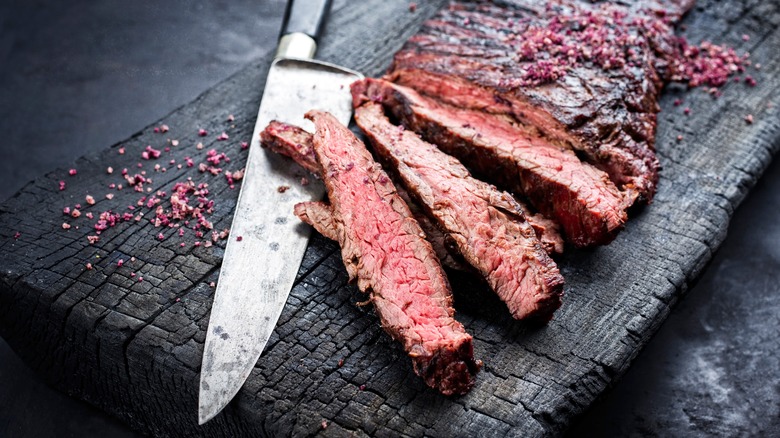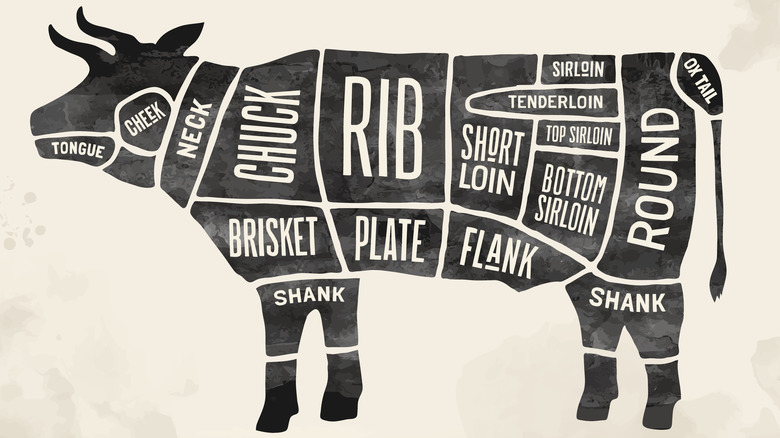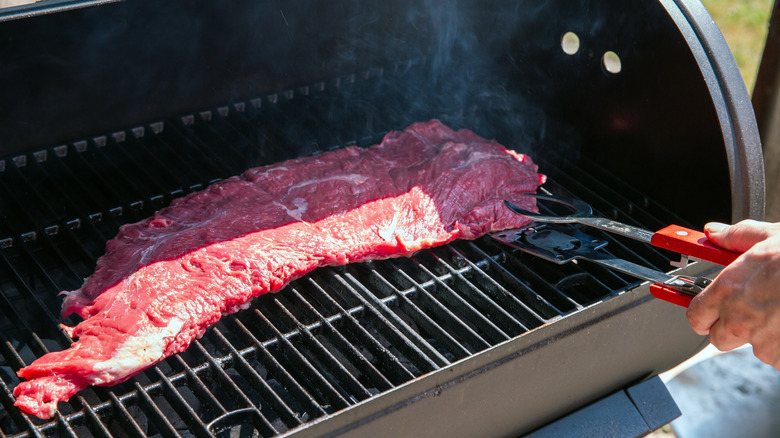Why Americans Overlook Premium Bavette Steak Cuts
Get your charcoals lit and your grill pans ready because there's another cut of beef perfect for high heat. It's called bavette steak, and it's giving skirt steak a run for its money. The cut is affordable, tasty, and easy to cook. But, you may not have encountered it because butchers know all of this far too well. For decades, many of the aproned experts set the meat aside for themselves, rather than placing it on display. We don't blame them — we would do the same if we had a versatile and under-appreciated premium steak on our hands.
More recently, customers have started picking up on the bavette's appeal through recommendations from friends and even butchers themselves. However, the beef can remain elusive even when it is displayed because it goes by so many names. Bavette is its French name, but you may have seen it referred to as flap meat, faux hanger, sirloin tip, bottom sirloin butt, and a handful of other iterations of "sirloin" and "flap." This makes it difficult for even the most eager shoppers to track down.
The inside scoop on bavette steak
Though similar in texture to skirt steak (which we count as one of the best cuts of steak), bavette (or flap) steak comes from the bottom sirloin, which is a different part of the cow. Lower demand for the meat has left its price comparatively low, and it's usually sold in larger portions than skirt steak. The overlooked cut is also thicker and more tender than skirt steak.
The meat comes from the cow's abdomen, near where you'd find flank steak, and is usually nicely marbled. The well-used muscles make the flap meat more fibrous and grainy than many other cuts. This is another reason some shoppers may overlook the steak, as the texture can give inexperienced cooks pause. But, as long as it's prepared correctly, you have nothing to fear. In addition to its alluring price tag, the cooked beef is also notably soft. After they try it, many eaters, find themselves returning to buy it over and over.
Cooking up flap meat
After you finish asking your butcher for help finding the overlooked cut and sharpening your knives, you'll find the rest is easy. Though this meat may be new to you, beef enthusiasts have had plenty of time to pin down the best approaches to making flap steak. One thing everyone agrees on is that the bavette thrives when marinated before hitting a hot grill.
The cut is still amassing its following in pockets of the U.S., but it's already well-loved among many cooks in Central and South America. New England residents are likely to be familiar with the cut in the form of steak tips. Marinated meat shines in fajitas, stir-fries, sandwiches, and salads. The trick is to sear it to just medium rare and make sure to cut against the grain to maintain the soft texture. Then, pair it with an herbaceous or punchy sauce to bring out the smoky flavors.
A word of warning: Don't bother trying to stew or braise this inexpensive steak, as it will just become tough. And, resist the urge to cut up the sizable portion before it hits the flames. You'll need to move fast once flap meat starts cooking, and you'll struggle if you're monitoring multiple servings. Trust the process and plan to slice thinly when you're ready to eat.



